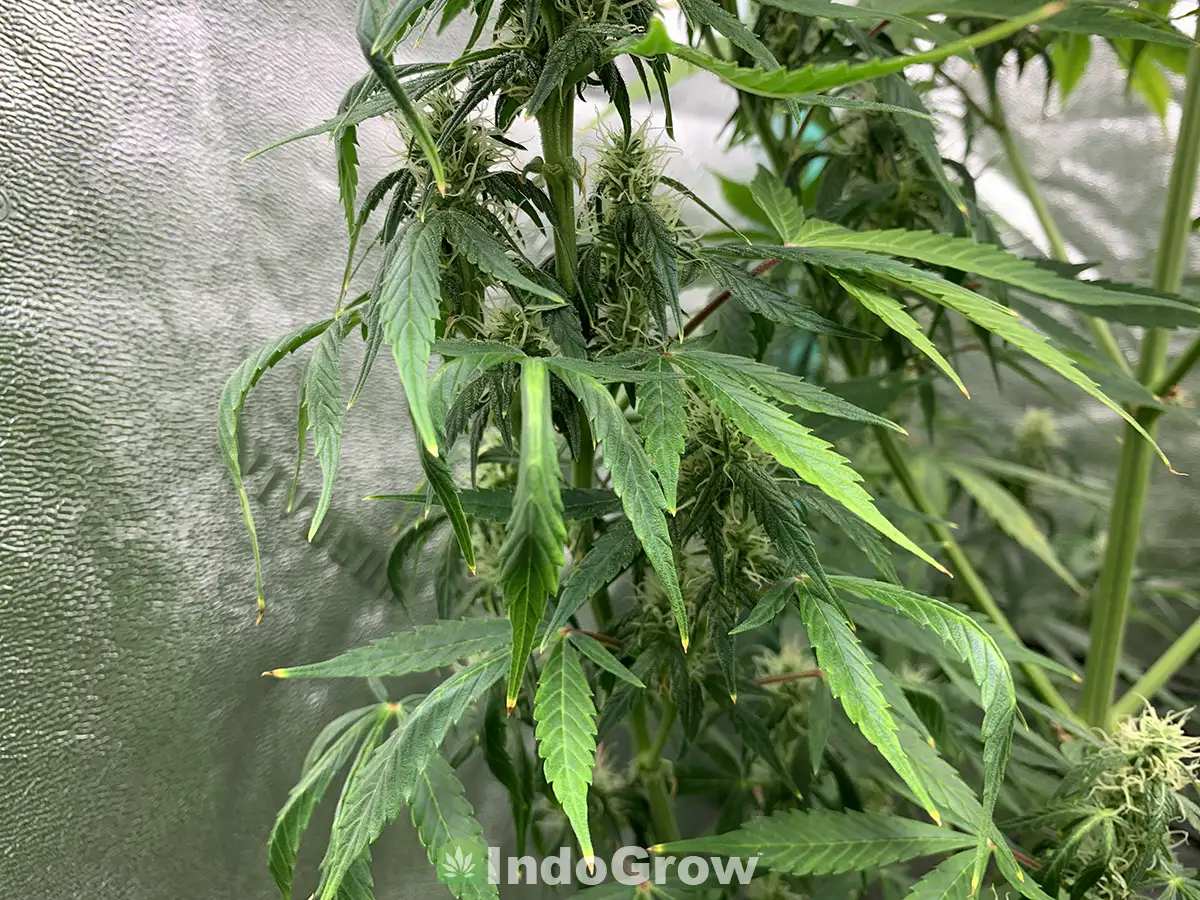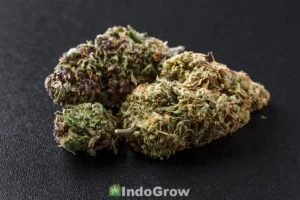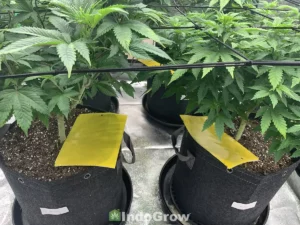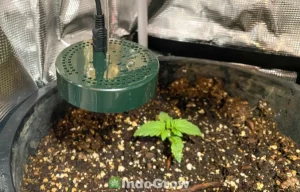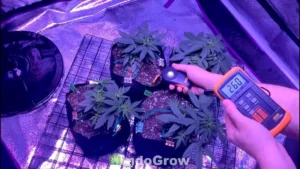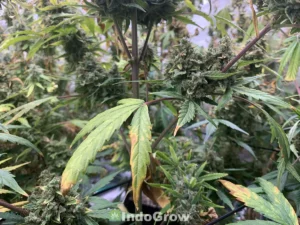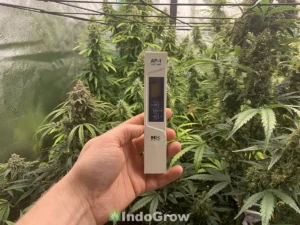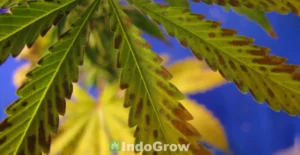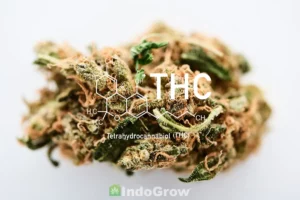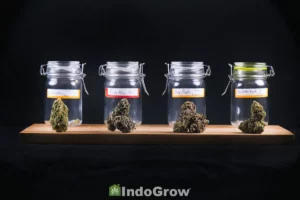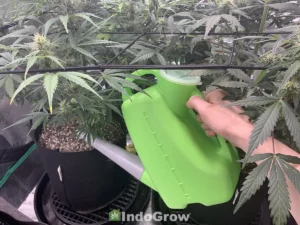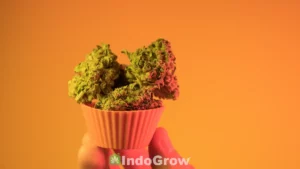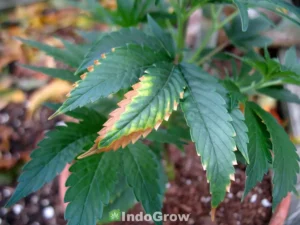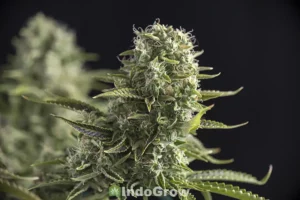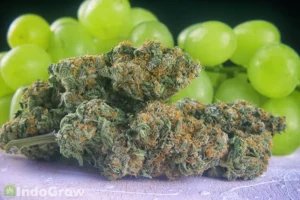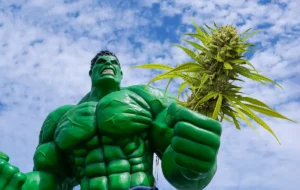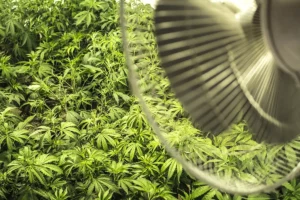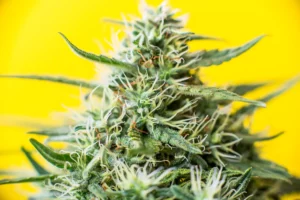Any cannabis grower knows that healthy leaves are key to a successful harvest. But sometimes, your plants can develop leaf problems even with the best care. One of the most common issues is leaf curl, often called “the claw” or “clawing.”
Curled leaves is a symptom that your cannabis plant is not growing under optimal conditions. Other indicators often exist as well and together, you should be able to diagnose the problem and make the necessary adjustments.
This article will discuss what causes cannabis leaf curl and how to fix it. We’ll also provide some tips for preventing the problem in the first place. So don’t let leaf curl ruin your harvest – learn how to fix it now!
How to Fix Curling Marijuana Leaves
Curling, twisting, or clawing marijuana leaves is a common issue for growers. There are several potential causes of leaf curl, which can range from heat stress to nutrient deficiencies.
Fixing cannabis leaf curl requires first identifying the specific cause of the problem. By acting quickly, most issues can usually be resolved without much impact on the final harvest. Some of the most common causes of leaf curl are discussed below.
Heat Stress
Heat stress is the most common cause of leaves curling down and twisting. Cannabis plants can suffer damage from heat stress in both outdoor and indoor growing environments.
When leaves are exposed to high temperatures, they often curl down and twist to protect themselves from the heat. This can cause the leaves to become dry and damaged, eventually leading to the leaves dying. Heat stress can also cause the leaves to produce less chlorophyll, making the plant appear yellow and eventually, brown.
How to Fix Heat Stress in Cannabis
If your plants are experiencing heat stress you should act quickly to lower the temperature and increase air flow around your plants.
- Turn up the AC unit in the room. You can use a portable AC unit or a swamp cooler if necessary.
- Dim and/or raise your lights.
- Increase exhaust fan speed to remove more hot air.
- Increase oscillating fan speed to increase air flow.
- Run your lights at night instead of during the day.
- Add CO2 to your tent.
- Supplement plants with Seaweed Kelp Extract, Humic Acid, and/or Silica to improve heat resistance.
Overwatering
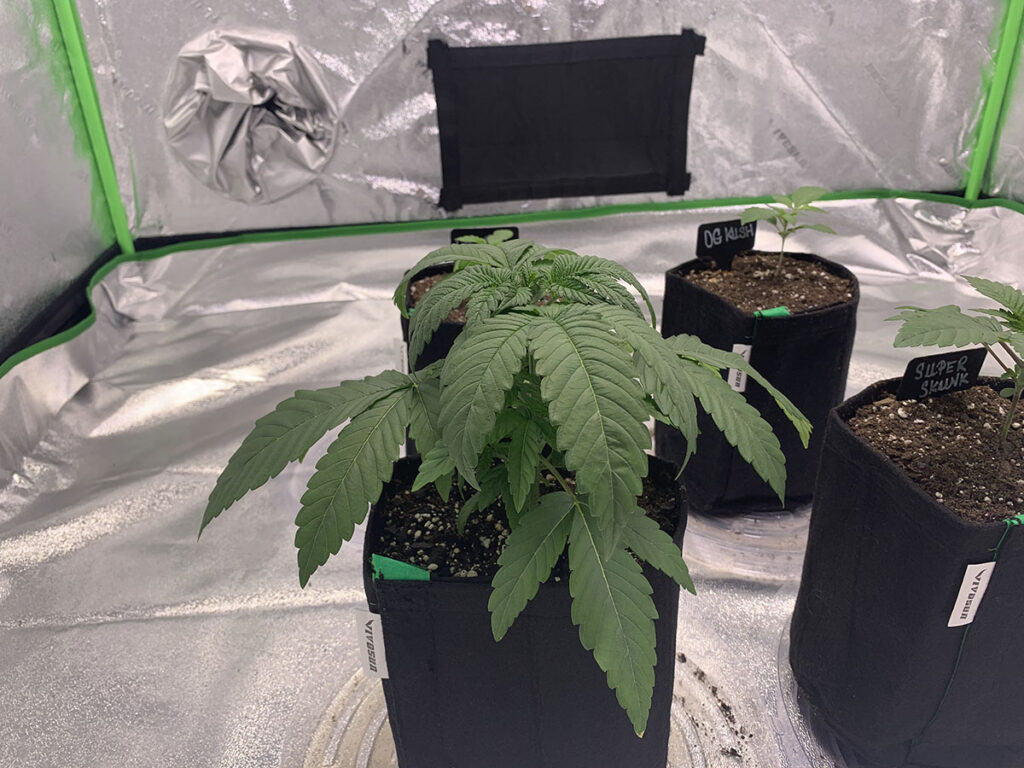
Cannabis leaves can also curl as a result of overwatering. Overwatering your cannabis plants can cause the leaves to curl down and twist because the roots are not getting enough oxygen. It is the second most common cause of cannabis leaf curl and drooping.
Affected leaves look swollen and fat with water. Overwatered plants often look dark green at first, but then leaves will turn yellow and eventually fall off.
If you suspect overwatering, then should let your soil completely dry out before the next watering. Using a basic moisture meter to monitor the soil can help, especially for beginners.
You can determine when to water by sticking your finger 1 inch deep into the top of the soil. If it is moist at all, wait to water. If it is obviously dry, then go ahead and water. It depends on plant size, pot size, and growing medium, but I typically water every 3-5 days when growing in soil.
Underwatering
When plants don’t receive enough water, their leaves will begin to droop to prevent water loss. Leaves curl down and tend to look thin and brittle. Unlike with overwatering, the stems droop in addition to the leaves when under-watered.
Curling and twisting leaves can be one way plants signal that they are stressed due to a lack of water. If under-watering is identified, you should increase the frequency and/or amount of watering.
It’s recommended to water until runoff is visible from the bottom of the pot. This ensures the growing medium is consistently saturated during each watering while also preventing nutrient buildup.
Nitrogen Toxicity
Nitrogen toxicity is the third most common cause of leaf curling. Nitrogen is an essential nutrient for cannabis, but too much nitrogen can be harmful. Nitrogen toxicity can cause leaves to look dark green all over.
It’s caused by an excess of nitrogen in the soil, which is typically due to over-fertilization. Either by giving too high a nutrient dose or feeding too frequently.
If you suspect that nitrogen toxicity is the cause of your plant’s symptoms, you should first test the runoff pH and ppm. Soil with a buildup of nitrogen salts will usually have runoff with a low pH (acidic) and high ppm.
If nitrogen toxicity is suspected, you should flush the medium with plain, pHed water until substantial runoff. Use a wet vac to remove the runoff and repeat as necessary after additional runoff testing.
You may also want to consider reducing the amount of nitrogen your feeding or the frequency of your feedings. Be sure to adjust all nutrients to maintain the manufacturer-recommended ratios.
I typically start with half the recommended dose for liquid nutrients and feed every other watering. Feed-Water-Feed. Depending on the runoff EC/PPM readings, I may then adjust the nutrient amounts and feeding schedule.
Nitrogen Deficiency
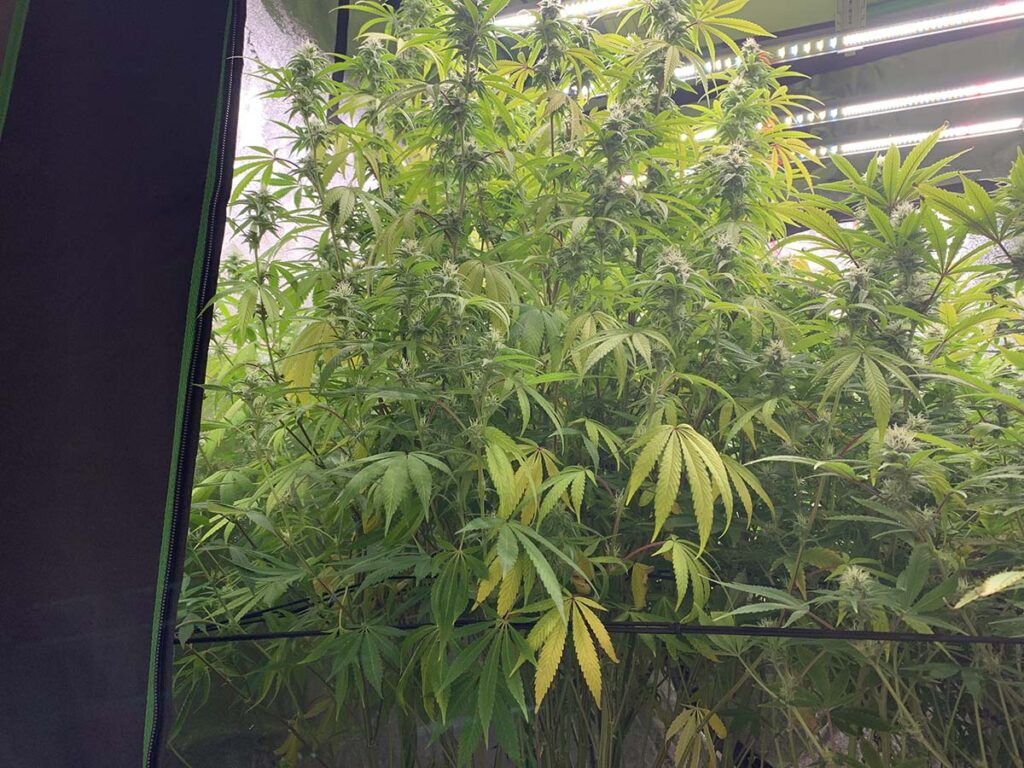
Nitrogen is an essential element for plant growth and development. It involves many biochemical processes, such as photosynthesis, protein synthesis, and cell division. A lack of nitrogen can stunt cannabis plant growth, reduce yields, and even kill your plants.
Symptoms of nitrogen deficiency include yellowing of leaves, stunted growth, and leaf curl. Typically, the lower leaves of the plant will began yellowing first and gradually move up the plant. This is because nitrogen is a mobile nutrient and the plant will transport it to fuel new growth at the top of the plant.
Often times, the growing medium actually has enough nitrogen, but the roots are unable to absorb it due to improper soil pH. So the first step to test the runoff pH and make sure it’s within 5.5-6.5. 5.8-6.2 is optimal. Adjust the soil pH if necessary.
If the pH is correct and you still suspect a nitrogen deficiency, then you should increase the dose of nitrogen-containing nutrients and/or increase feeding frequency. Be sure to increase all nutrients to maintain proper ratios if using a nutrient set.
Wind Burn
Weed leaves frequently curl down due to windburn. Long-term exposure to overly strong winds can cause plants to curl inward as a defense. You may notice dark, burnt-looking spots on your leaves if windburn is what’s making them curl. In severe cases, windburn can kill a cannabis plant.
Curling in a region with a lot of airflow is probably caused by windburn. Windburn could happen in a grow tent if the fans blow too hard and/or are placed too close to the plants. Plants further away from the fan will not have symptoms.
If this applies to your situation, the remedy is straightforward. Reduce the fan’s speed and/or increase the fan’s distance from the plants. If it isn’t possible, consider altering the fan’s angle to avoid hitting your plant directly.
Light Burn
Light burn is one of the most common causes of leaves curling down and twisting in cannabis. Light burn, which happens when the plants are too close to the grow lights, is very common when growing indoors.
Light burn is caused by the plant receiving too much light, which can cause the leaves to turn yellow and brown and eventually die. Affected leaves tend to curl up or down, may appear twisted, and tips may also appear burnt. Leaves further from light should not experience these symptoms.
The best way to prevent light burn is to only provide your plant with the appropriate amount of light for its needs. The amount of light is typically determined by the grow space instead of the number of plants since plants can be trained to fill any space. 32-52 watts from the wall is generally recommended per square foot of grow space.
To fix light burn, you should first try to raise your lights further from your plants. Dimming your lights and gradually increasing intensity throughout the grow is also recommended. Always keeps lights at least 18-36 inches from the plants if possible.
Using a Par Meter to get accurate light intensity readings is also recommended to provide optimal grow conditions. Your light manufacturer can provide additional guidelines for your specific light.
Bad Soil/Poor drainage
Plants grown in soil need proper drainage to thrive. Soil that is thick and muddy without proper oxygen penetration can cause the roots to suffocate and the plant to stress. This stress manifests in the leaves, causing them to curl up, down, or appear twisted.
When assessing the state of your soil, consider drainage, water retention, and texture. If your plants do not proper soil, they will be unable to maintain optimal oxygen levels, retain water, or absorb nutrients.
Overwatering can lead to mold, root rot, and even death. Your soil mix may benefit from adding tiny pebbles or pearlite to improve texture and aeration, keeping the soil airy and light while facilitating drainage.
Root Rot
Root rot is a serious problem for cannabis plants and can lead to the leaves curling up or down and twisting. This is caused by overwatering and/or poor drainage. The build-up of water in the soil can lock out oxygen and lead to mold in the root zone.
If you suspect your plant has root rot, transplant it immediately and treat it with an anti-fungal product. Root rot is one of the most common causes of cannabis plant death, so be sure to take it seriously if you notice it happening to your plants.
Root Bound
This occurs when the plant’s roots become so tightly packed together that they can no longer get the necessary nutrients and water from the growing medium. This can happen if the plant is grown in a pot that is too small for the plant’s size.
When this happens, the plant leaves will begin to curl down and twist to get more light and air. If you suspect that your plant is root bound, transplant it to a larger pot immediately.
A general rule of thumb is that a cannabis plant should have 1 gallon of soil for every 12 inches of height. So a 5 foot plant will need at least a 5 gallon pot.
Another general rule is 1 gallon per month of growing. So if you’re growing autos and it takes about 3 months, then a 3 gallon pot is the way to go. If you’re growing photos and it takes about 5 months, then you’ll need at least 5 gallon pots.
Bugs and Insects
Cannabis plants can suffer damage from pests in many different ways. Although the pests may not always be visible, the negative impacts they cause will be obvious. The most prevalent pests that trouble weed plants indoors are fungus gnats, aphids, and mites, which often reside on the undersides of leaves.
These pests will eat the leaves, causing them to curl downward. The leaves will lose all their life force and nourishment if a pest infestation is not stopped. This may cause leaves to become disfigured and yellow. In severe cases, the plant may even die.
If you see any insects on your plant, use a pesticide to kill them right away. Fungus gnats can usually be taken care of with sticky paper placed near the root zone.
Summary
One of the most common issues is leaf curl, often called “the claw” or “clawing.” Curled leaves are a symptom that your cannabis plant is not growing under optimal conditions. By quickly identifying the cause and taking steps to resolve, your plants will usually recover.

Rocky Horton
Author
Rocky Horton is an experienced cannabis grower and the founder of IndoGrow. The IndoGrow editorial team has over four decades of combined growing experience. Learn more.

